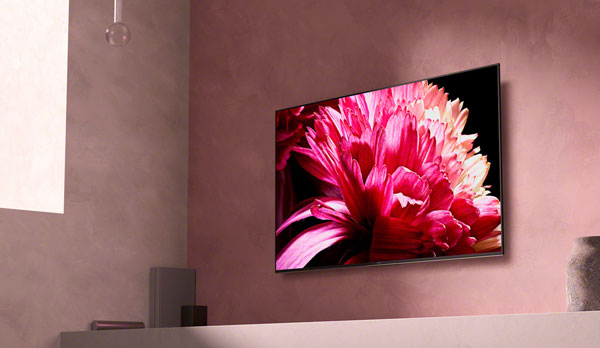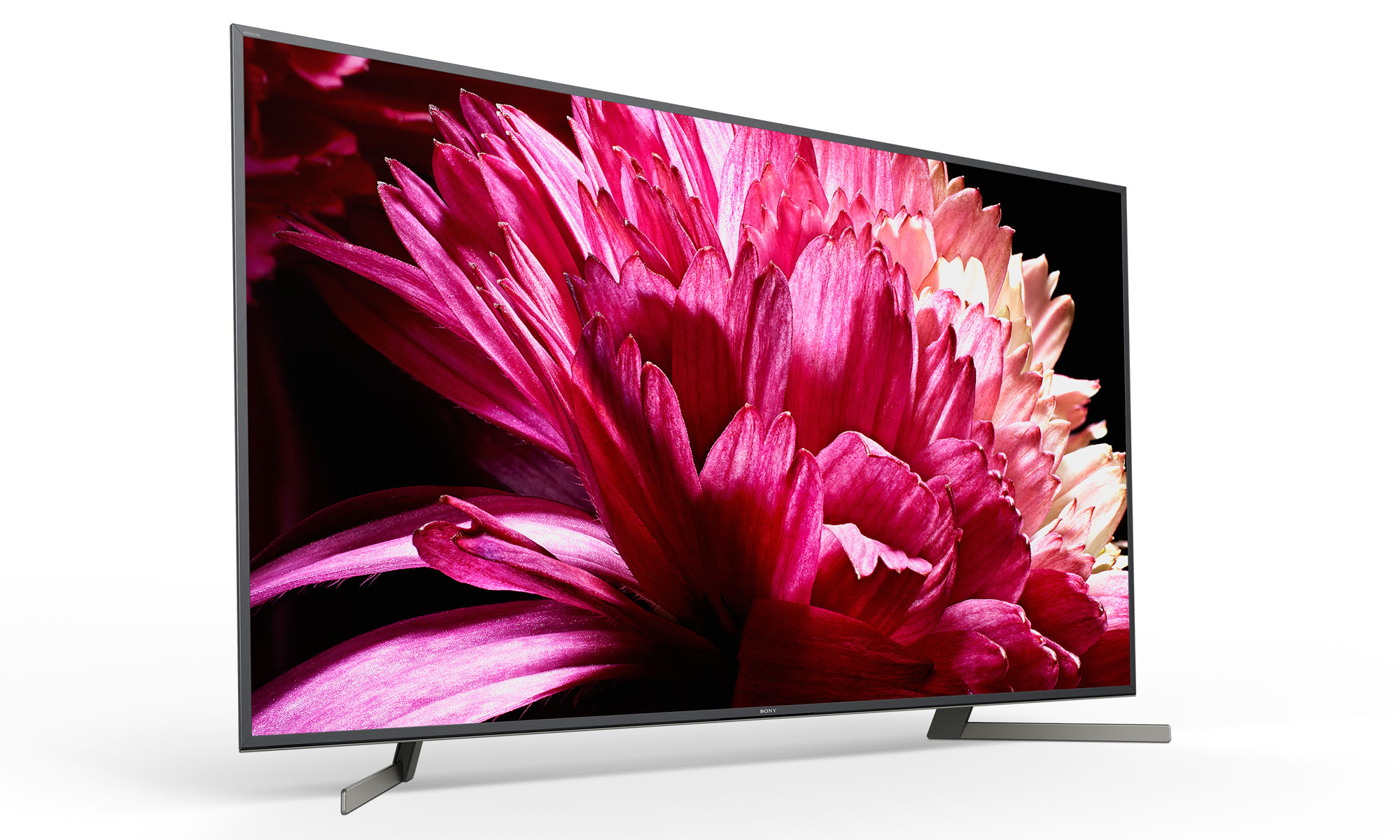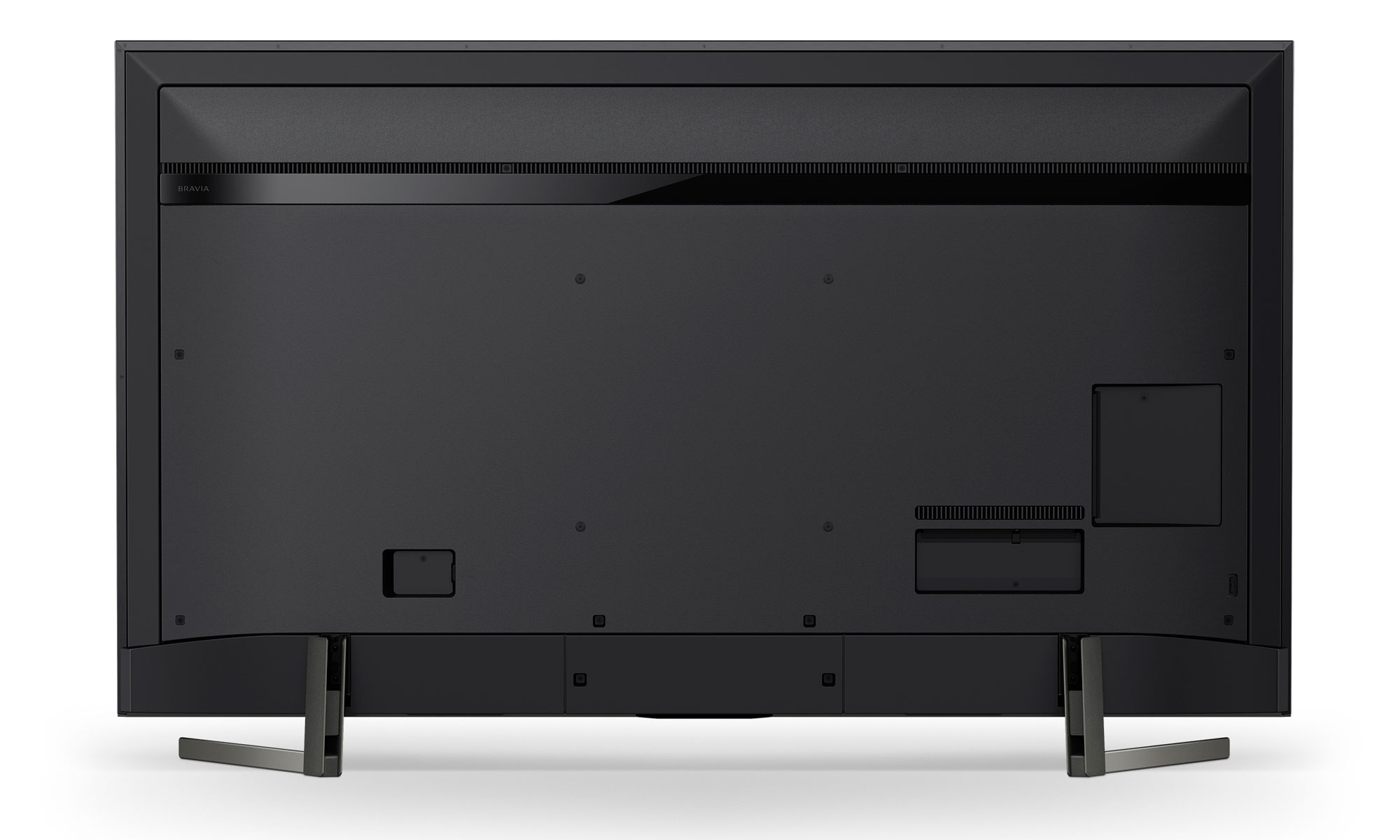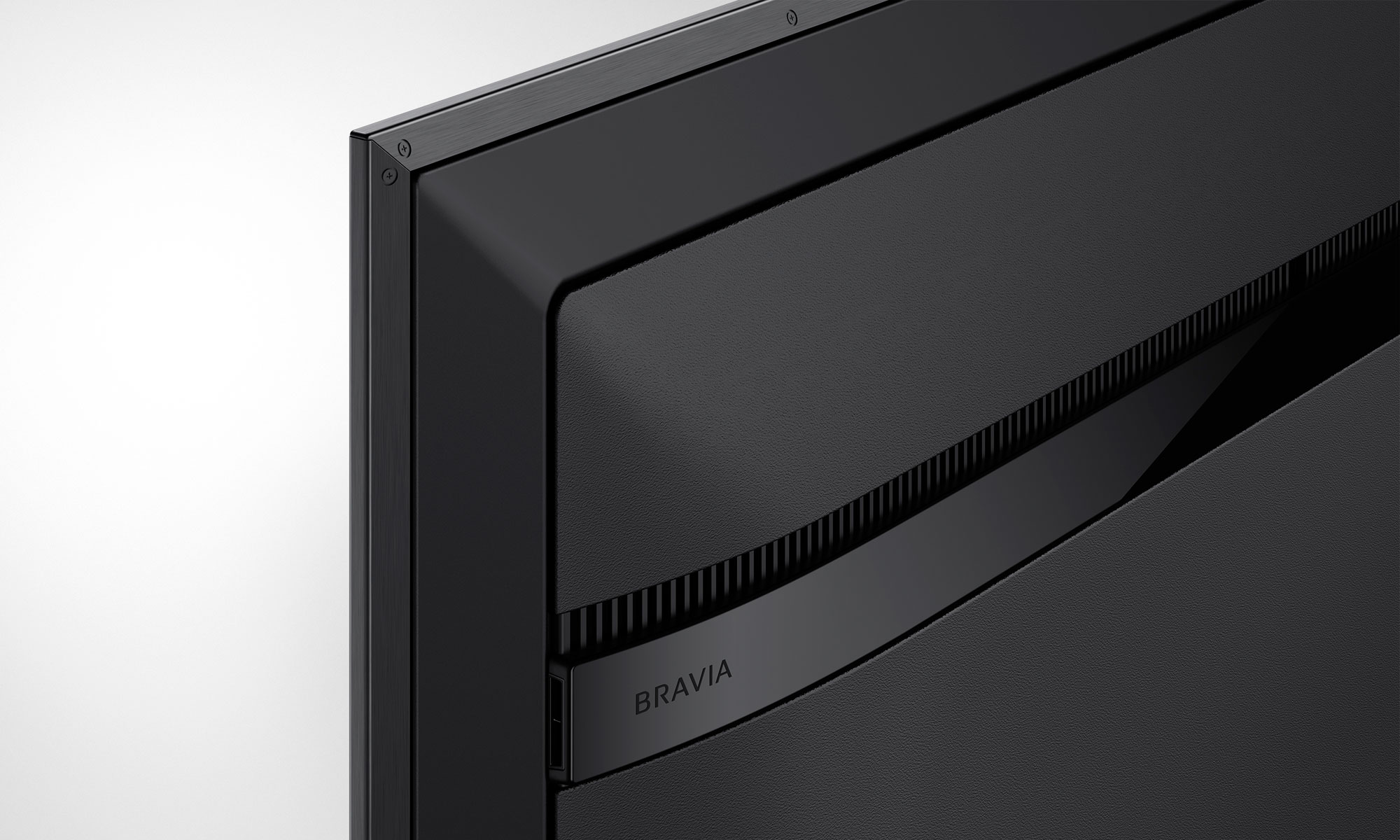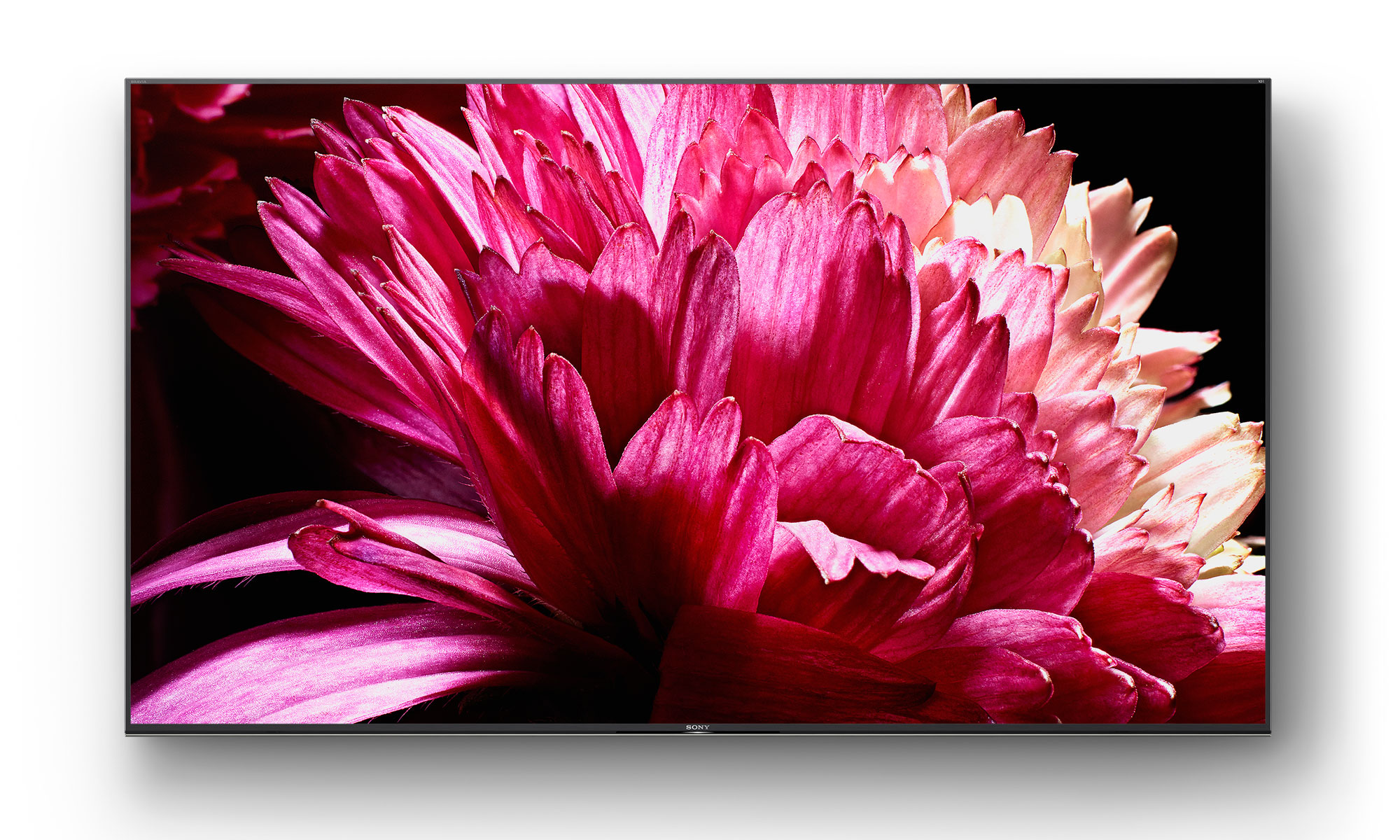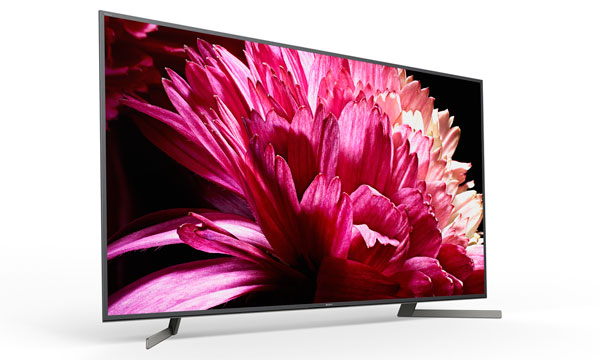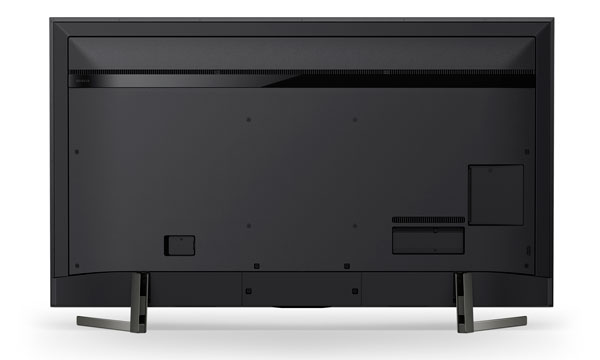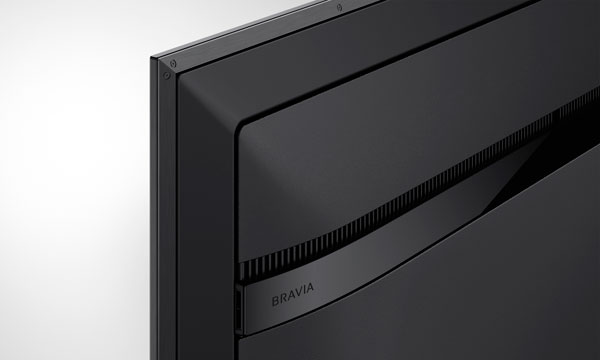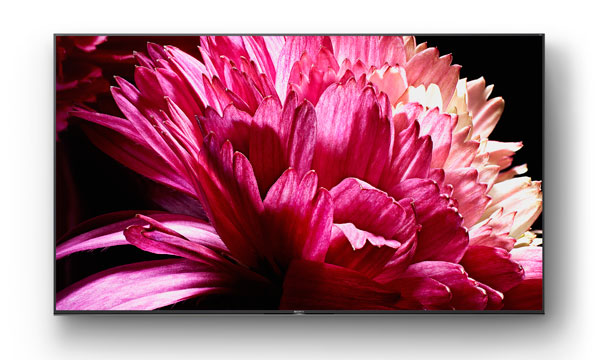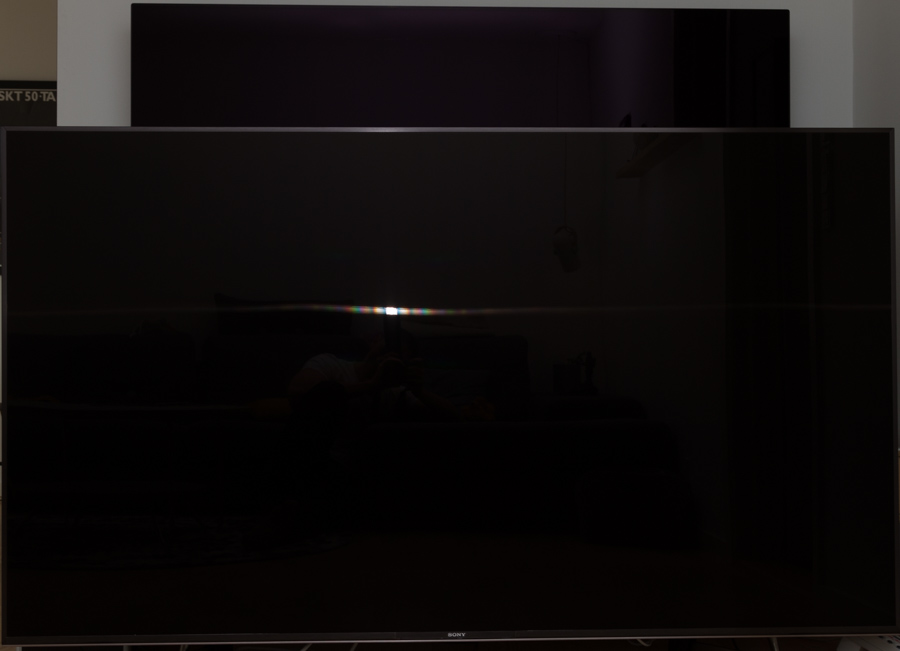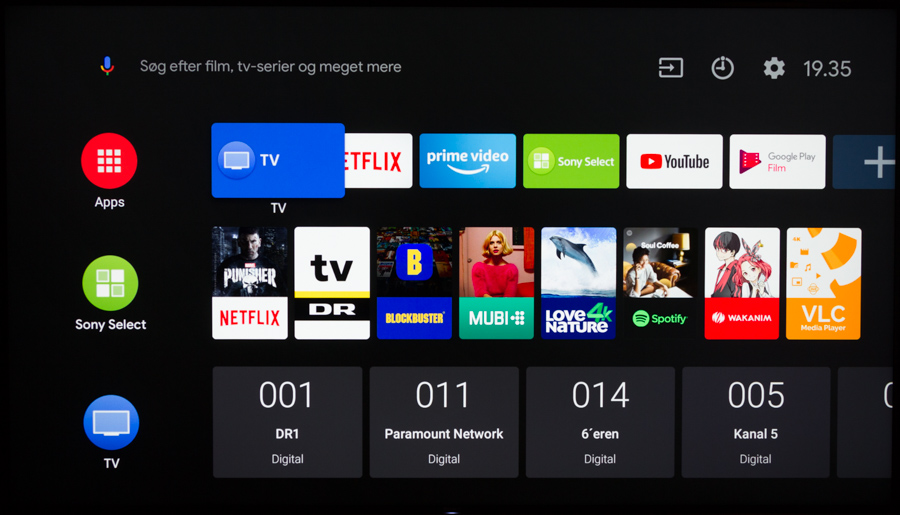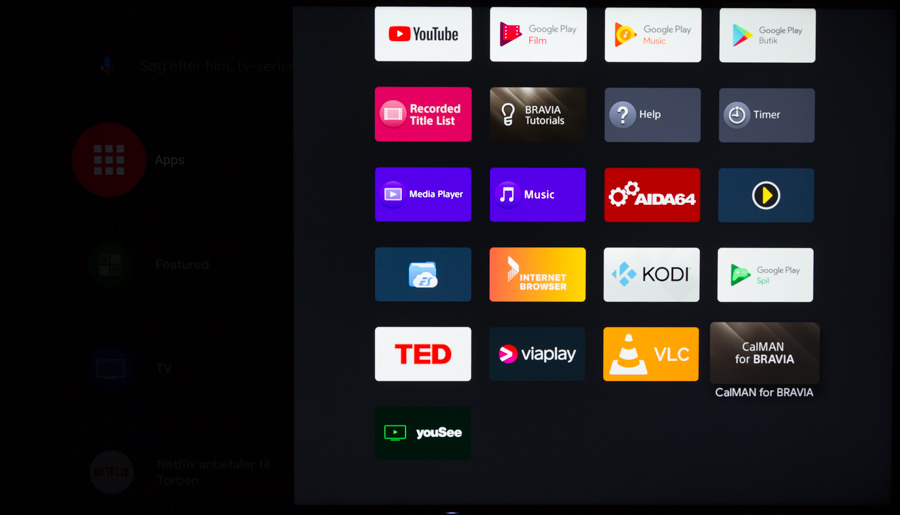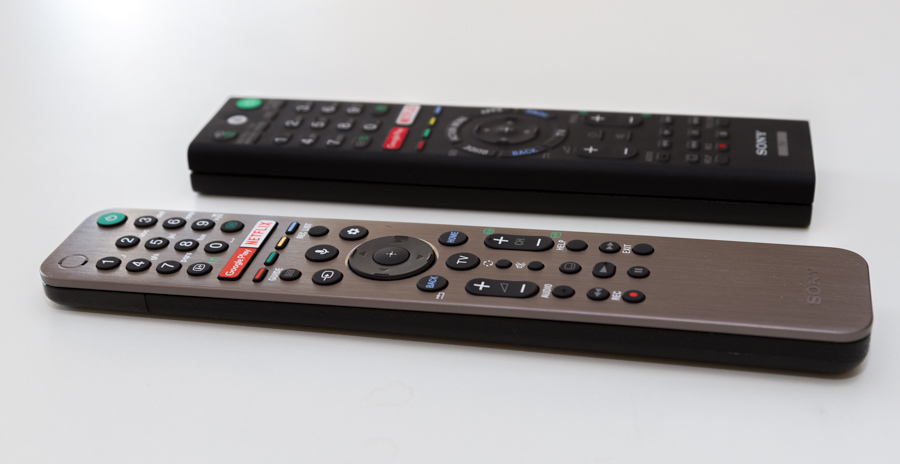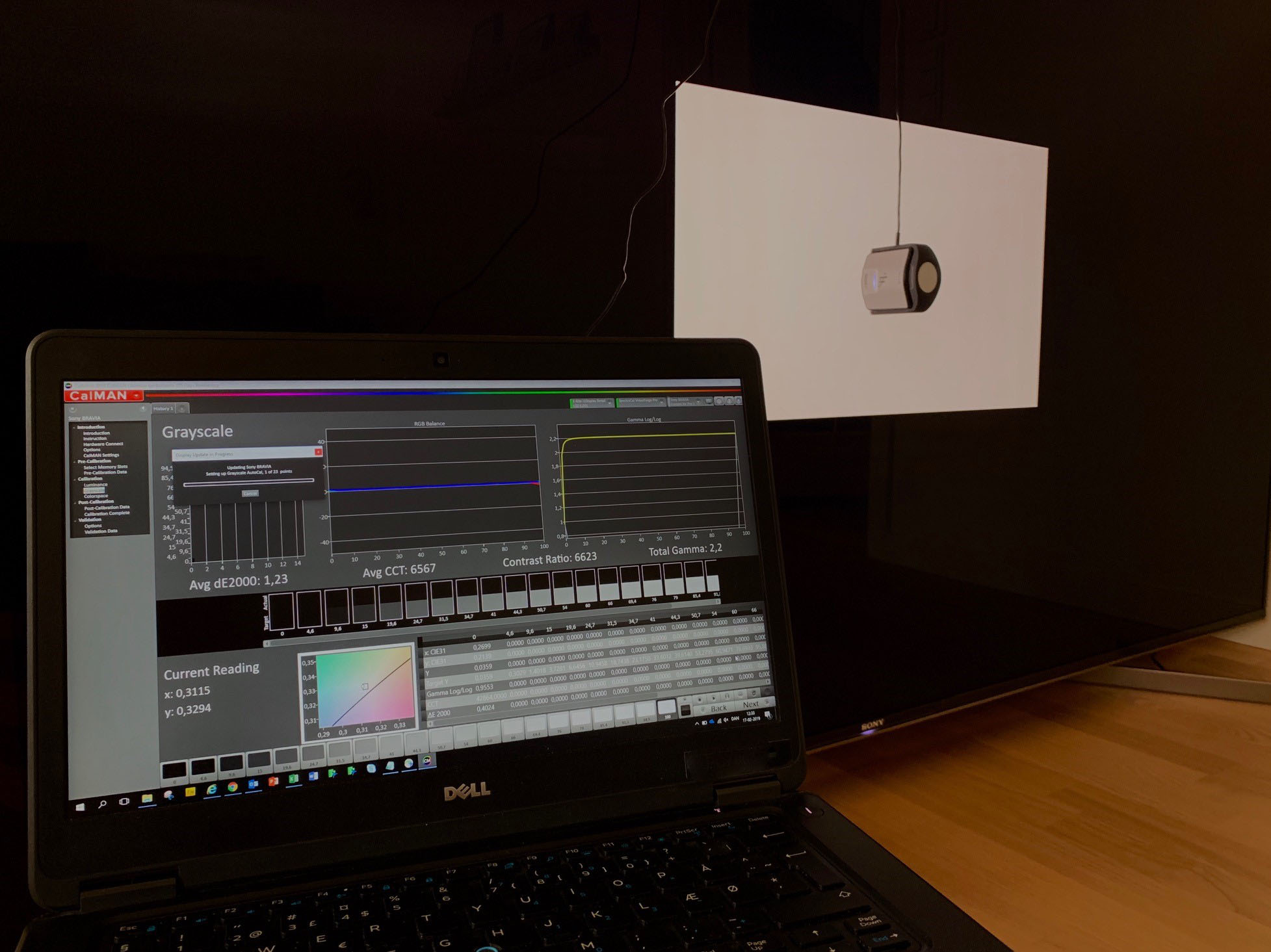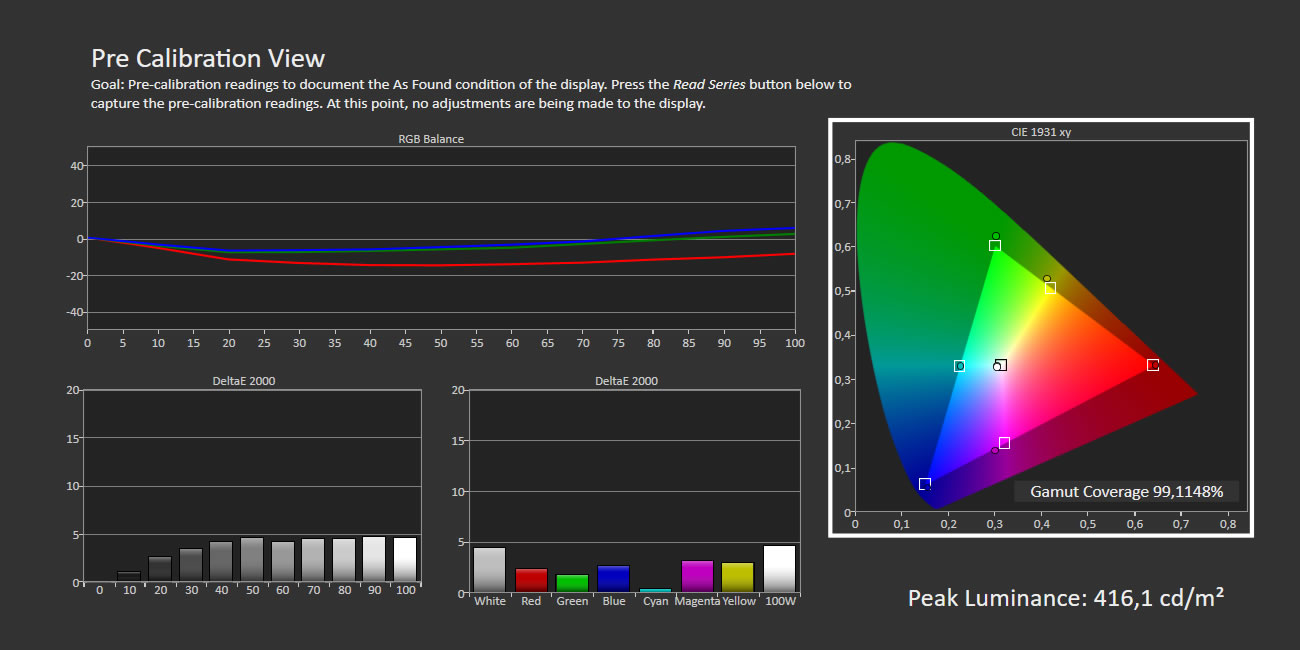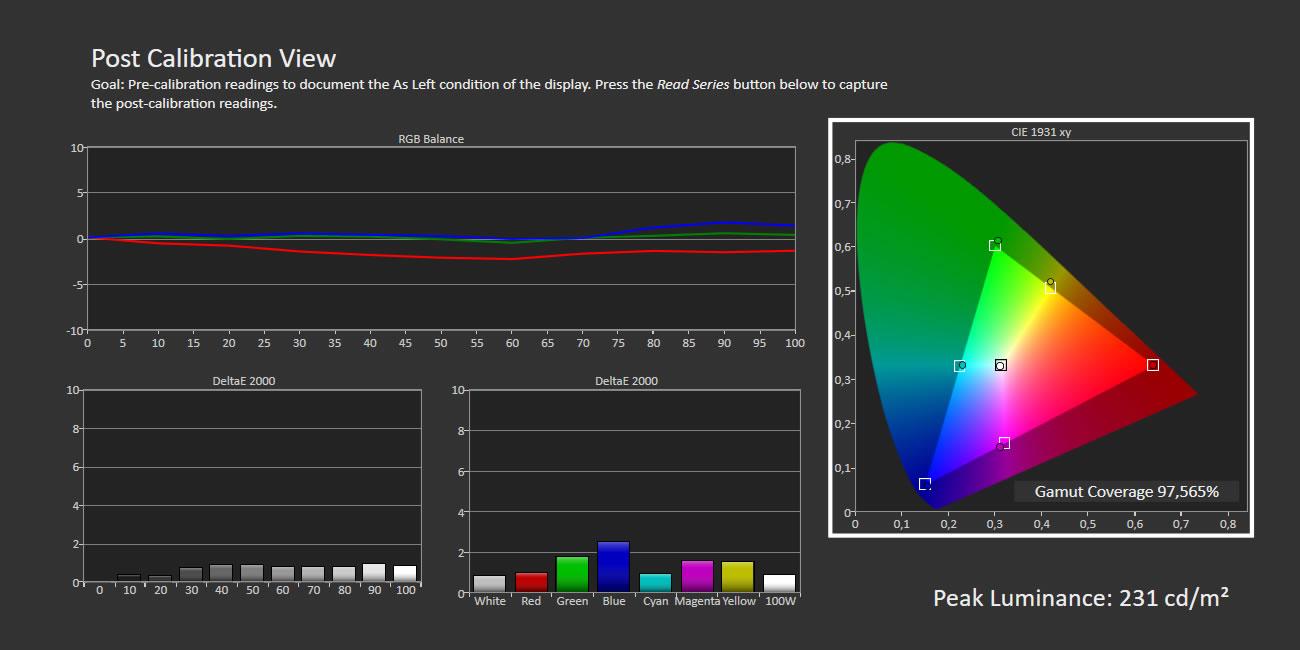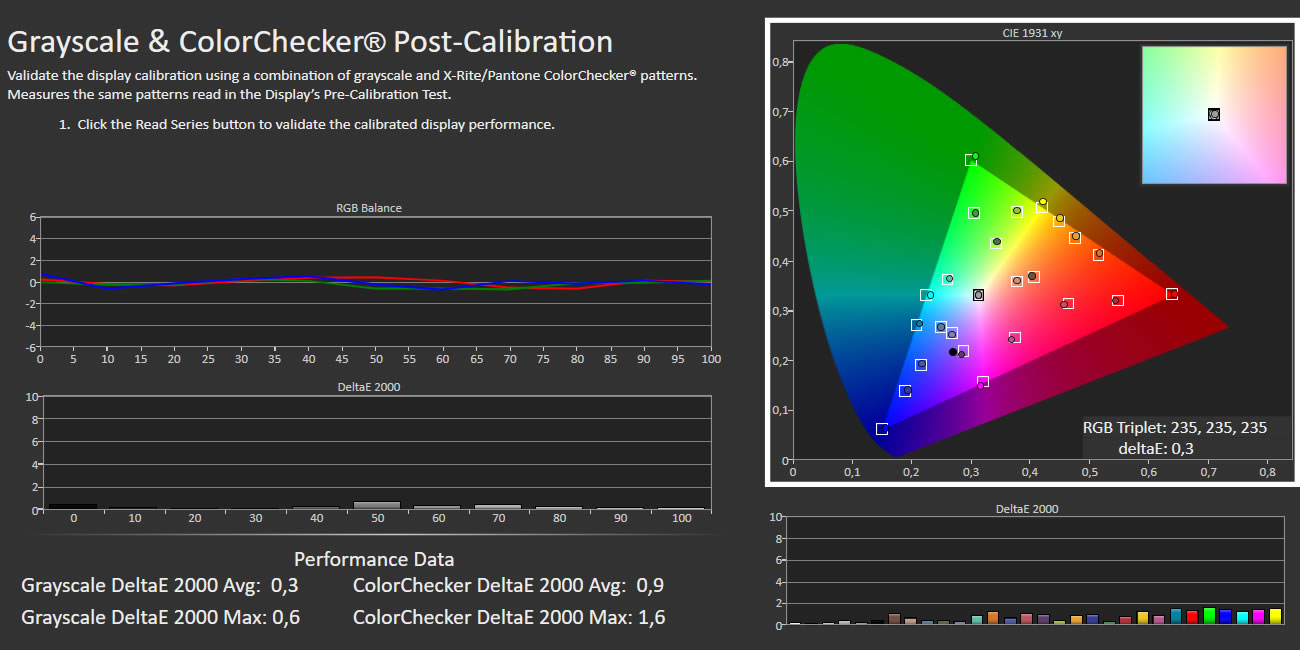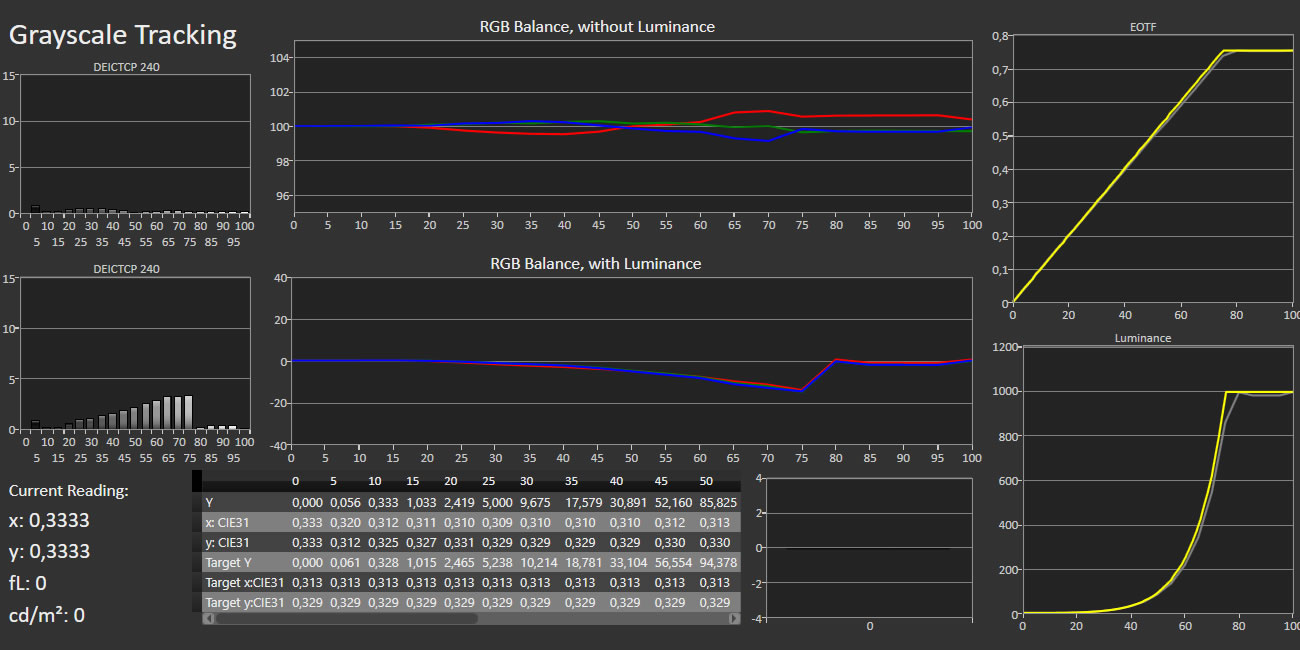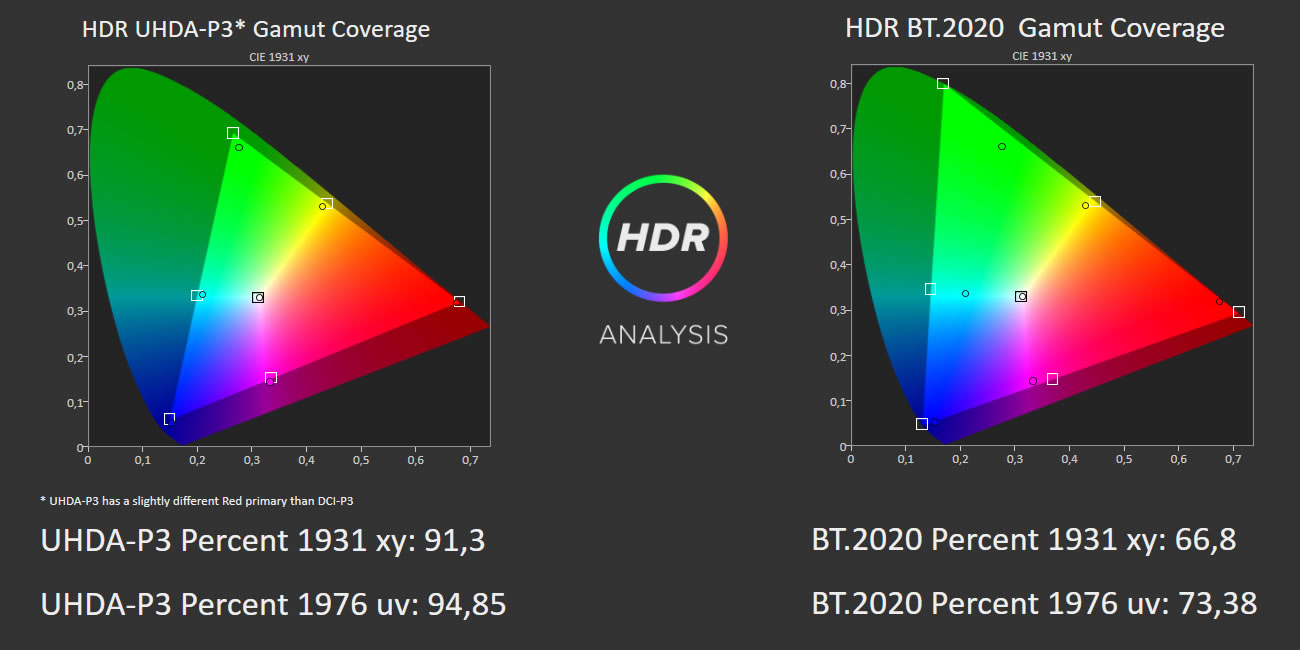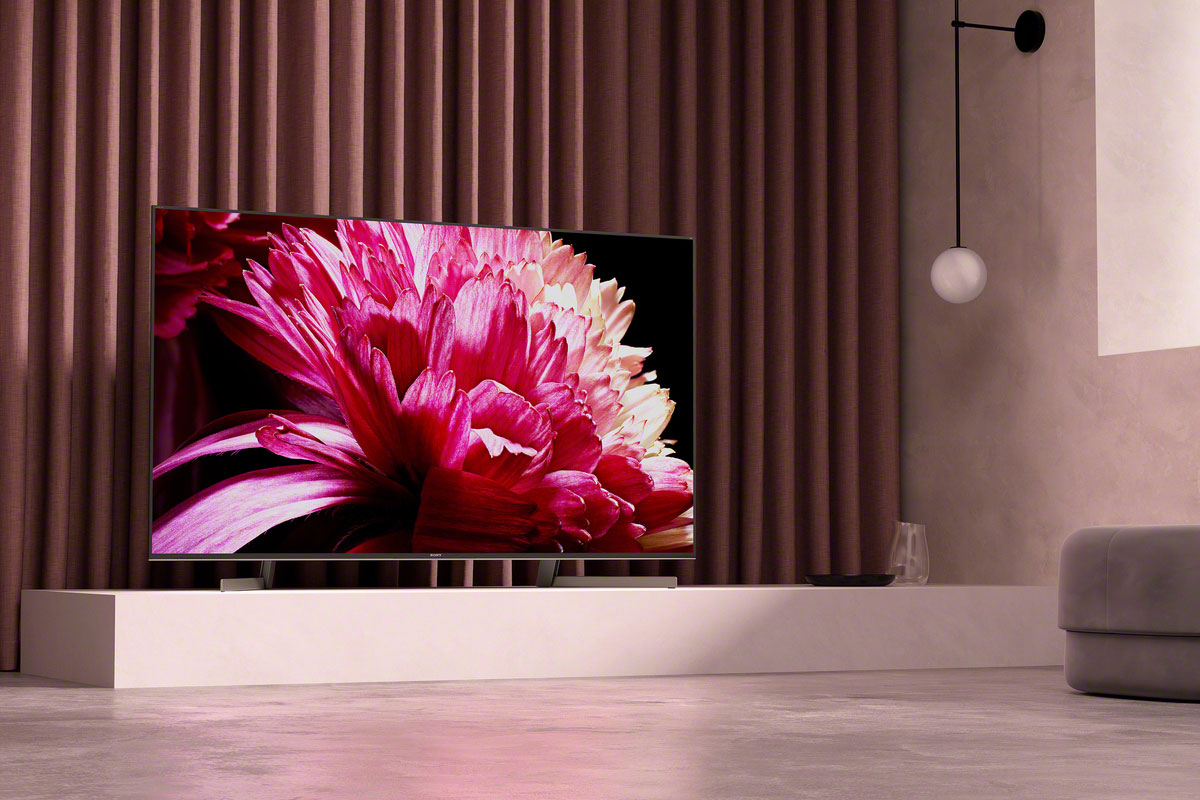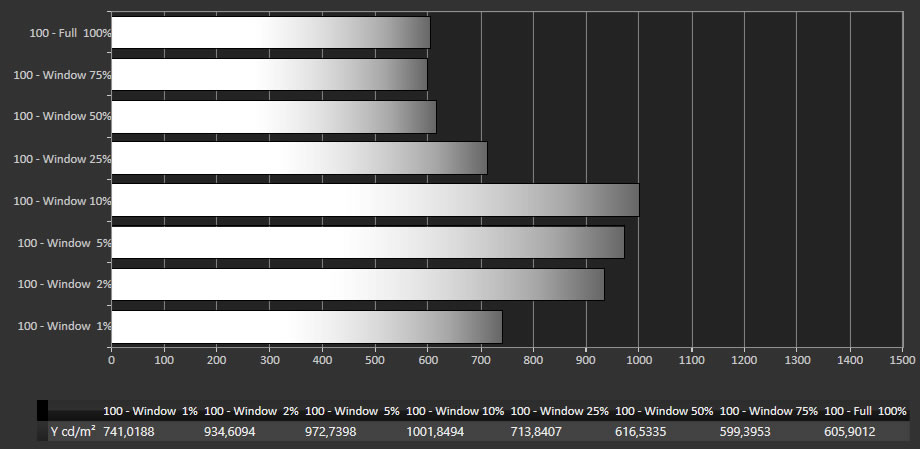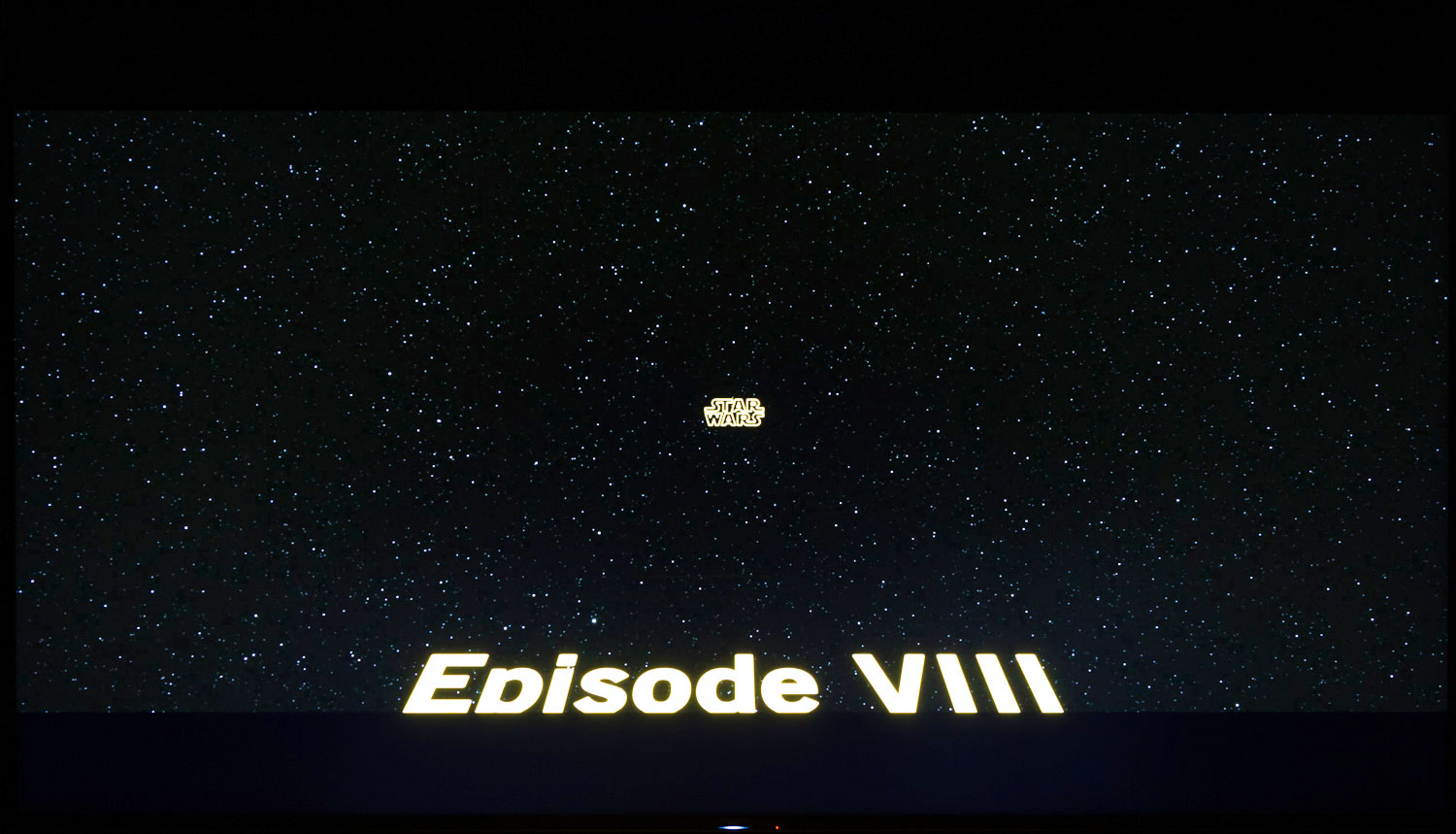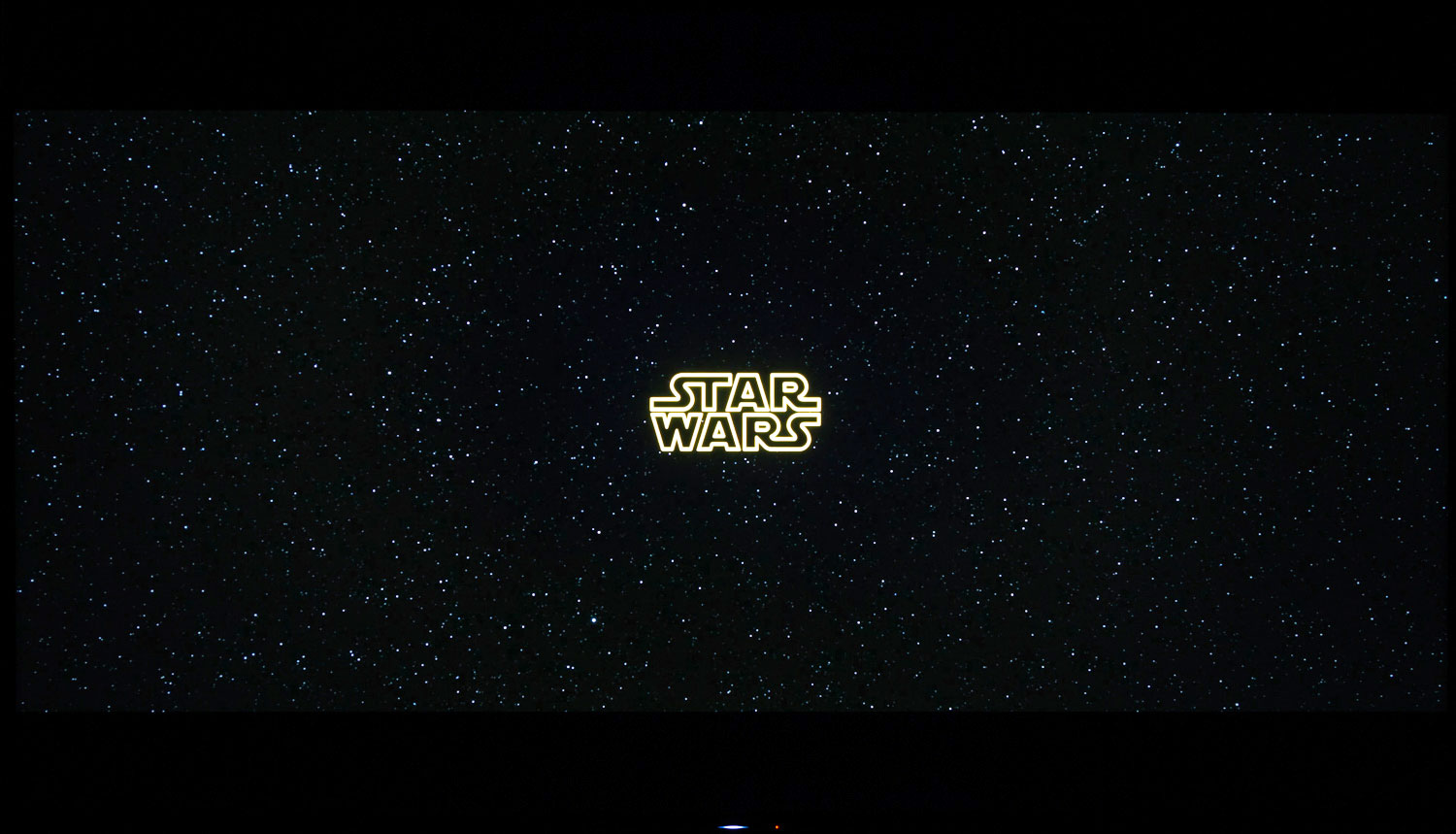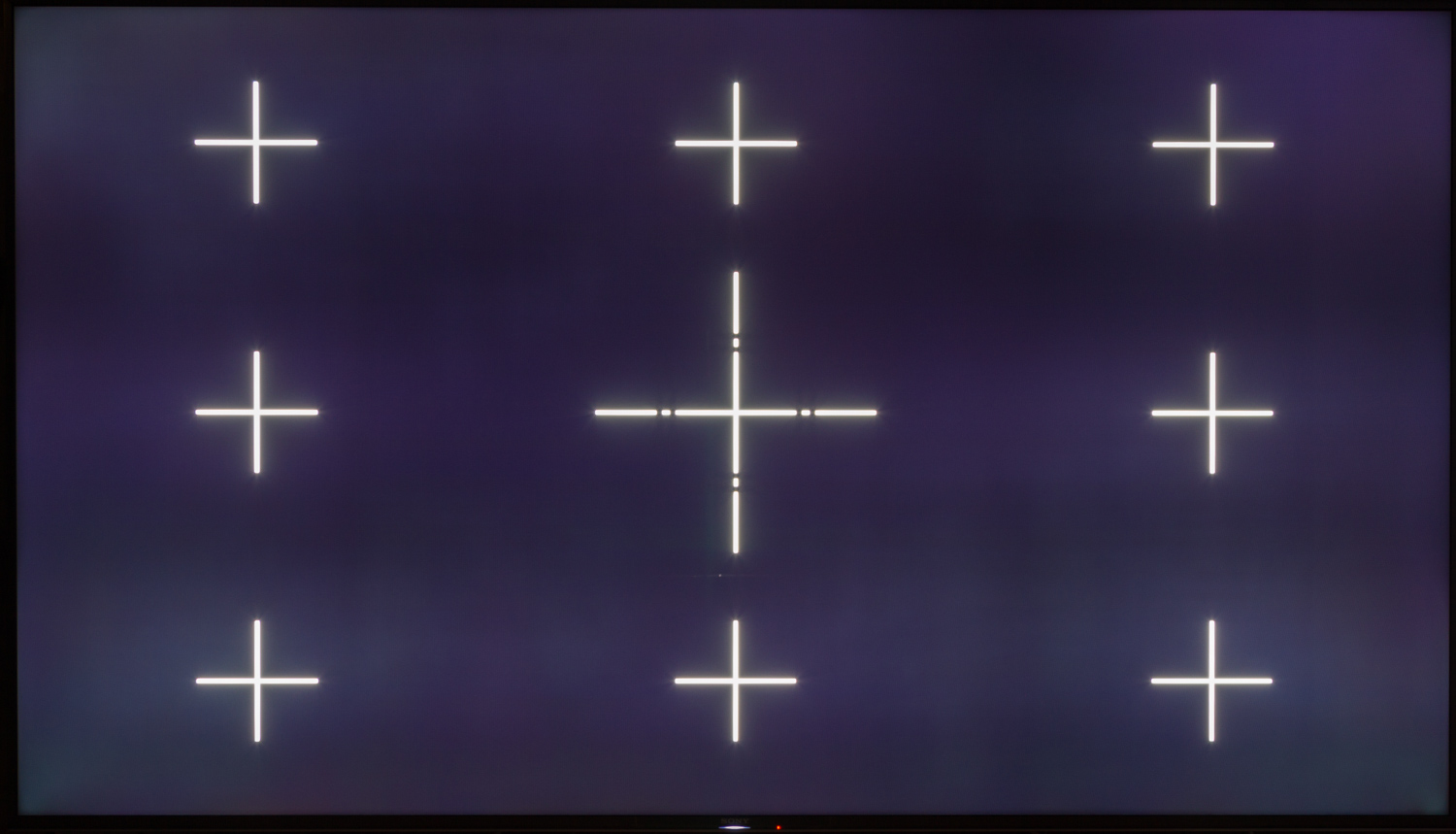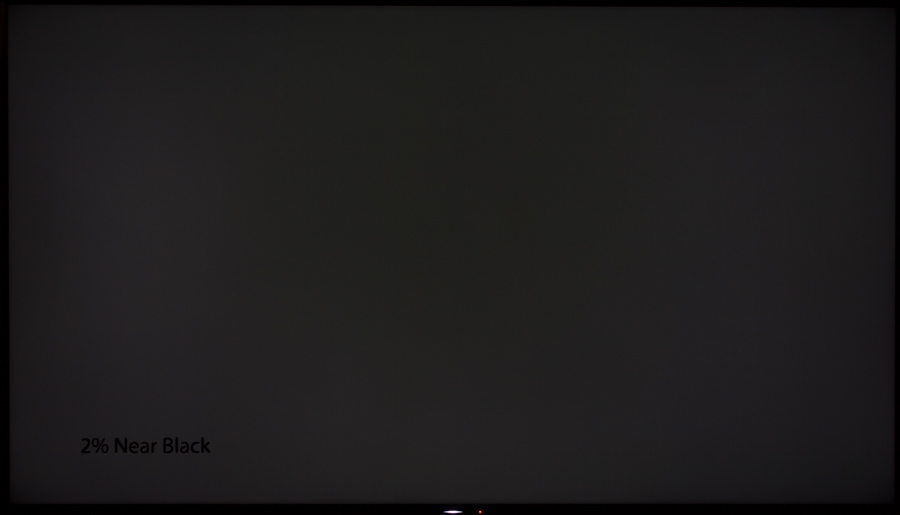Review: Sony X950G (XG95)
In the second half of 2018, Sony launched two new flagship TVs. At CES in January 2019, the company announced that these TVs will be discontinued in favor of new flagship models. X950G (XG95 in Europe) will replace Z9F (ZF9), which was Sony’s first TV with ‘X-Wide Angle’ technology designed to improve viewing angles on a VA LCD panel. X-Wide Angle is found in the 75- and 85-inch models, while the 55- and 65-inch come without. X950G also comes equipped with a full array local dimming (FALD) system, Dolby Vision support, Dolby Atmos support, HDMI eARC, and Android Oreo (version 8.0).
Sony X950G (XG95) will be available in 55, 65, 75, and 85-inch sizes in the US and Europe. We are reviewing the 75-inch model, which together with the 85-inch model is equipped with X-Wide Angle.Price and retailers:
Sony XG95 - specifications
75-inch VA LCD panel with zone dimming (FALD)
X-Wide Angle filter4K Ultra HD (3840x2160)
HDR (HDR10, Dolby Vision, HLG)
DCI-P3 color spaceStand (fixed)
Wall (VESA - 400x200mm)(HxWxD) 96.1x167.4x7.3 cm (without stand)
37.6 cm deep with stand37/35 kg (with/without stand) 4x HDMI 2.0 (full bandwidth, HDCP 2.3)
3x USB
1x Ethernet
1x CI+Optical
HDMI eARC (1x)2x10 W DVB T/T2/C/S2
Dual tuner
WiFi (ac)
Bluetooth 4.2
Chromecast Built-in
Apple AirPlay 2 & HomeKit (via later update)MPEG4
HEVC
VP9 Profile2Android TV (ver. 8.0 Oreo) Remote control
AppManual
IR remote control
StandSubscribe to our Newsletter, Facebook, twitter or RSS to receive notice when new reviews are publishedFirst impressions
We did not receive a review sample of last year’s Z9F (ZF9), which is now being discontinued. As such, X950G (XG95) will be the first Sony TV on our test bench to feature the ‘X-Wide Angle’ technology designed to improve viewing angles. We have the 75-inch model. Unfortunately, Sony has decided not to include X-Wide Angle in the 55- and 65-inch X950G models, meaning that our full evaluation of picture quality only applies to the 75- and 85-inch models.
Modern flat panel TVs without soundbars or other protruding elements tend to look quite similar and from a design perspective X950G does not stand out. The TV resembles last year’s X900F, with some minor changes such as the coarse-textured back and the glossy segment near the top. Sony has confirmed that X900F will carry over into 2019 and that X950G is considered the new flagship 4K LCD.
The TV is quite thick, which is to be expected for a LCD TV with a full array local dimming system. Like last year, Sony has made sure that all input/output ports face either down or to the side. All HDMI 2.0 ports are now full bandwidth ports, meaning that they can carry 4K HDR at 60Hz. The ARC port has been upgraded to eARC, which is specified to handle lossless audio formats such as Dolby Atmos in Dolby TrueHD.
The built-in speaker system has gained two extra channels. Sony has fitted them at the top of the back cabinet and they are designed to fire sound to each side. The stand is largely unchanged and still has a cable management system built-in. However, the more extensive solution that extends to the cabinet is reserved for Sony’s new 8K TV.
And last but certainly not least, Sony has finally listened to our and others’ prayers. The company has designed a new remote control that we will get back to in a minute.
The panel’s reflectance level is average and not as low as for example Samsung’s Q series TVs and various OLED TVs. Vertical stripes are sometimes visible when light is reflected in the panel, which can be attributed to the X-Wide Angle filter.User experience & features
All of Sony’s latest TV come pre-installed with Android Oreo (version 8.0). When checking the technical specifications of the SoC, we were able to determine that X950G comes equipped with the MediaTek 5893 SoC but with a later revision number compared to AF9 (UR2 vs. UR1). Same speed but for some reason it has less RAM.Operating system & smart TV
Android Oreo introduced a revamped home screen with rows (or “channels”) to make them more easily accessible. In addition, a row can be assigned to a specific app that can pull its video content front and center on the home screen (if the app supports it). Android Oreo on X950G has a slightly refreshed in the sense that icons have more rounded corners. Besides that Android on X950G feels more or less identical in use compared to Android on A9F so we have included the video that we originally shot for our A9F review below.
Since Android Oreo is more or less identical, we refer to our Sony A9F review for more information.
Instead, we turn our attention to the new stuff and changes in the 2019 models. One significant change is that Sony has finally gotten around to refreshing its own user interface, meaning the non-Android parts. To understand what this entails it is important to understand how today’s Android TVs are designed. While it may seem logical to assume that Android control the full user interface, it is actually just the “smart” portion of the TV.
Underneath you have the manufacturer’s own operating system that interacts with Android in various ways. Picture and audio settings, along with some other settings, are typically not embedded in Android, which is why Sony’s picture menus look very different from those in Philips Android TVs. This underlying part of the system must also be updated from time to time, if the goal is to advance features such as the TV Guide, settings menus, the program information bar etc.
Furthermore we note that the YouTube app now supports HDR and that it is capable of automatically switching to HDR format. However, playback via USB often fails when using Sony’s built-in media player app. On the other hand, the media player app is noticeable faster to navigate compared to X900F.
If you venture further into Sony’s menu system you will at some point reach an area that allows you to manually configure the TV channel list, and this menu will show you just how fragmented Sony’s TVs actually are. This menu has not been refreshed for years and it basically looks like something you would find in an HD TV. The same goes for Sony’s ‘Sync menu’ that is required to set-up HDMI CEC. These are examples of menus that look out of place compared to the more modern look of the new Android interface.
Sony TVs have previously featured a messy ‘Action’ menu that would slide down from the top. The company later added a ‘Discover’ menu that would slide up from the bottom when watching TV channels. With the 2019 generation, Sony has finally abandoned the Action menu and moved everything to the bottom menu – much like Samsung and LG. In the refreshed menu you will find shortcuts to inputs, user-configurable settings, and – if you are watching TV channels – the TV guide. The settings menu in particular comes in handy as it allows you to add shortcuts to specific setting options. To some extent, this new menu mirrors what LG has done with webOS.
At CES 2019, Sony announced that Apple AirPlay 2 and HomeKit will be supported in select 2019 TVs. However, the features are not enabled in our sample of X950G. Sony informs us that they will be added via a later update, much like Dolby Vision on Sony TVs in the past. It is likely that Apple is dictating launch plans. We also note that are AirPlay and HomeKit are not yet highlighted on Sony’s product pages.
Until AirPlay arrives, you can use the built-in Chromecast feature. However, it is still locked to 60Hz like all previous Android TVs, which can result in video stutter with 25/50fps video content. We hope that AirPlay will finally address this issue.
Google Assistant has been rolling out to TVs for some time now but is still not available in our region. X950G has built-in microphones in the frame, which enables the user to speak “OK Google” commands (must be enabled manually from the TV’s menu). There is also a built-in microphone in the remote control that you can activate by pressing the microphone button.
Since Google Assistant is not yet available in our region, we were not able to test how it integrates with our services and devices but Google has a product page available online that give you a rough idea. We were, however, able to test the microphones built into the frame. Unfortunately, on more than one occasion the TV started listening as if it had heard the “OK Google” wake word, after which it proceeded to pick up some words in the living room and do random stuff. My recommendation would be not to active the “OK Google” feature to avoid having the TV perform spontaneous search queries.
Android TVs receive regular updates to the smart TV platform, albeit slowly. Google has already released Android Pie (version 9) and is expected to announce the next version later this year. Android Oreo is currently rolling out to select Sony TVs from the 2H2016 generation and onwards. Still, updates routinely add some new features after purchase. TVs based on Tizen and webOS do not receive major updates.
Once again this year, we must conclude that Sony’s TVs continue to wake up from standby from time to time to do something. It affects connected USB devices and raises standby consumption to upwards of 30W for a considerable period of time. It is a matter for criticism and we find it problematic that Sony continues to ignore the issue after having been aware of it for years. We recommend that you disable ‘remote start’ in order to minimize the effect but we still have no bulletproof solution for getting a Sony TV to maintain its standby state, which is something that other TV manufacturers respect.Operation
After years of criticism for having one of the worst TV remote controls, Sony has finally shaken the bag and designed a new one. The refreshed remote control no longer has the annoying rubber surface and soft plastic buttons of the previous generation. Instead, it has a metal surface with smaller and much improved buttons.
Sony has removed the redundant circle of buttons around the navigation keys that previously contained shortcuts to the Action menu, TV functions, home screen and TV Guide. These shortcut buttons are still available but have been moved elsewhere and away from the navigation buttons, which in my opinion makes more sense. The redesigned remote control has roughly the same number of buttons so it in that sense it represents a traditional approach to controlling a TV, unlike the more simplified remote controls from Philips and Samsung.
The upper side of the remote is made from metal, while the back continues to be hard, textured plastic that feels cheap. I would have preferred the same soft plastic that previously covered the upper side of the remote on the back of the new remote, at least over this solution. Or ideally a metal unibody remote control. The back feels too rattling and elastic.
The new remote control is thinner than the previous one but the weight feels almost identical – perhaps a bit too light. The overall redesign is a clear improvement and it goes much better in line with Sony’s premium TVs but there is still room for improvement. We have asked Sony if the new remote control can be bought separately and paired with previous TVs but have yet to hear back.TV channels, recording & sound
The TV channel interface is part of Sony’s own system and together with the other changes, Sony has made a few tweaks in this area. You can now access the TV Guide from the bottom menu by scrolling down to the TV Guide section, which has also been expanded to include more channels.
Sony XG95 in Europe supports TV recording but still lacks time shift functionality, which is supported on Philips Android TVs. Furthermore, PiP does not allow you to watch two TV channels at the same time. Changing the channel still takes 2-5 seconds, despite the faster SoC, but on the other hand the TV Guide is noticeably faster compared to last year’s models.
Sony has added two additional tweeter units near the top, one on each side with the goal of adding more dimension to the sound stage and the give the impression that audio is “coming right from the screen”. However, since the system is limited to 2x10W these are not discreet channels for Dolby Atmos. The effect is certainly noticeable but since the existing speakers have a tendency to sound shrill, there is not much benefit to be had from adding extra units in the high-frequency range. Overall, the speaker system lacks bass and depth.
X950G is compatible with Dolby Atmos, meaning that it can take Atmos sound from apps (such as Netflix) or let a lossless (Dolby TrueHD) Dolby Atmos soundtrack from an UHD Blu-ray player pass-through the TV to an external soundbar or receiver via the TV’s HDMI eARC port. For this purpose, we had requested a sample of Sony’s ST5000 soundbar, which also supports HDMI eARC and Dolby Atmos. And yes, it works, but we encountered various bugs resulting in dropouts or no sound at all when trying to feed the soundbar with an Atmos soundtrack. To resolve the issue we had switch to the built-in speakers and then back to external audio output, after which the Atmos soundtrack was passed through as intended. Dolby Digital 5.1 did not cause any issues. We encountered these issues regardless of whether we were trying to output Netflix’s Atmos or pass-through Atmos from an external player. We do not have other devices with eARC at this moment so we are unable to conclude whether the issue is related to eARC in the TV or soundbar – or both – or Sony’s implementation of Atmos in general.
Also read: HDMI 2.1 finalized - 8K/10K resolution, variable refresh rate, eARC, new cable
Sony has not implemented any other HDMI 2.1 features in its 2019 TVs.Calibration
Starting with the standard user-facing menus, X950G has a myriad of picture modes available to choose from. Most of them are very poor when measured up against the reference. Curiously, ‘Graphics’ mode gave us the best out-of-box results but it is relatively easy to tweak ‘Personal’ mode to conform to the picture standards, which involves minor adjustments to 2-step white balance. We encountered small deviations in the red primary color but nothing worrying.
This is the first time that we have used CalMAN AutoCal on a Sony TV. “AutoCal” is short for auto-calibration, which means that it is an automated process. Unlike LG’s TVs where auto-calibration is integrated on an underlying hardware level, Sony TVs adjust the same picture settings that are available to the user. To get the CalMAN software to communicate with the TV you need to download an Android app that initiates the connection. Unfortunately, the app cannot generate the test patterns required for auto-calibration so external pattern generator hardware (such as Videoforge Pro) is still required, unlike Panasonic and LG’s 2019 high-end TVs.
When calibrating the TV via AutoCal (see picture) you gain access to two extra profiles under the ‘Personal’ mode that can be adjusted individually (i.e. day and night). Since Sony added CMS adjustments, meaning color adjustment for primary and secondary colors, it has been possible to fix errors in how the panel handles the color space. All adjustments are based on the Rec.709 color space with a D65 white point and a 2.2 gamma (which is a bit ironic since Sony TVs are set to 2.4 gamma per default). AutoCal adjusts colors with 10-point adjustment, and these settings will automatically be applied to all picture modes that are set to the same color space.
Unfortunately, AutoCal does not set the gamma setting so you must remember to manually switch to 2.2 once you are finished as it will otherwise be set to 2.4. Not the most elegant solution, if you ask me.
With Sony TVs you do not calibrate HDR modes. Everything is automatically derived from the SDR calibration in gamma 2.2. It is therefore not possible to adjust things manually afterwards since any changes will also affect the SDR calibration. Luckily, this conversion function works quite well but after having used LG’s comprehensive suite of auto-calibration features that allows for plenty of fine-tuning, Sony’s approach feels a little archaic.
The TV comes with the so-called ‘Netflix calibrated’ mode, which is available only within the Netflix app. My recommendation is to use one of the other picture modes available from the TV’s standard menus, if you are planning to have the TV calibrated.Measurements
In our "measurements" section we include all measurements and our suggested calibration settings. If you want to learn more about our test methodology click here.Note: We include calibration settings only for SDR, not HDR. For our calibration we have deactivated the ambient light sensor that automatically adjusts the backlight setting according to your environment. You may prefer to have it enabled.
Brightness & color Out-of-box Calibrated Black level (SDR) 0.16 cd/m2 0.054 cd/m2 Black level (HDR) 0.259 cd/m2 (ANSI) 0.259 cd/m2 (ANSI) Brightness (SDR) 420 cd/m2 (10% window) 250 cd/m2 (10% window) Peak brightness (HDR) 741 cd/m2 (1% window)
934 cd/m2 (2% window)
972 cd/m2 (5% window)
1002 cd/m2 (10% window)
713 cd/m2 (25% window)
605 cd/m2 (100% window)Contrast 2500:1 4700:1 Contrast (HDR) 2500:1 2500:1 DCI-P3 91% - Rec.2020 67% -
Input lag Movie mode Game mode 1080p SDR 86 ms 22.1 ms 4K SDR 86 ms 22.1 ms 4K HDR 86 ms 22.1 ms
Power consumption Out-of-box Calibrated SDR 230 W 120 W HDR 295 W (mixed content) 295 W (mixed content) Standby 0.3 W (occasionally 28 W) 0.3 W (occasionally 28 W)
Group Setting Value Profile Personal Brightness Brightness 15 Contrast 90 Gamma 0 Black level 50 Adv. contrast enhancer Off Automatic local dimming Medium (SDR) / High (HDR) X-tended Dynamic Range Off Color Color 50 Color balance 0 Color temperature Expert 1 Live color Off Adv. color temp R-High Max G-High -5 B-High -6 R-Low 0 G-High 0 B-Low 0 Clarity Sharpness 50 Reality creation Off Resolution - Random noise reduction Off Digital noise reduction Off Smooth gradation Low (SDR/HDR10) / Off (Dolby Vision) Motion MotionFlow Personal Smoothness 1-2 Clarity 1 Film mode Off
Operation Time Start-up (until responsive) 4 s Start-up (until picture comes on) 4 s Netflix app start-up 8 s Amazon app start-up 9 s Youtube app start-up 6 s Google Play app start-up 2 s
Video file / source Specs Status Amazon 4K HDR 4K (3840x2160 pixels) – 10 bit colors - Rec.2020 color space – 4:2:0 subsampling – HEVC Works Netflix 4K HDR 4K (3840x2160 pixels) – 10 bit colors - Rec.2020 color space – 4:2:0 subsampling – HEVC Works YouTube 4K HDR 4K (3840x2160 pixels) – 10 bit colors - Rec.2020 color space – 4:2:0 subsampling – VP9 Profile2 Works Dubai 4K 4K (3840x2160 pixels) – 23.976fps – 10 bit colors - BT.709 color space – 4:2:0 subsampling – 51.4 Mbps bitrate – HEVC - .ts file Works Costa Rica 4K 4K (3840x2160 pixels) – BT.709 color space – 4:2:0 subsampling – 12.71 Mbps bitrate – VP9 - .mkv file Works Terrifying Pyroclast 4K 4K (3840x2160 pixels) – BT.709 color space – 4:2:0 subsampling – variable bitrate – VP9 - .mkv file Works Big Buck Bunny HD (.ts version) HD (1920x1080 pixels) – 8 bit colors - YUV color space – 4:2:0 subsampling – 2.5 Mbps bitrate – 60fps - HEVC - .ts file Works Big Buck Bunny HD HD (1920x1080 pixels) – 8 bit colors - YUV color space – 4:2:0 subsampling – 60fps - 2.2 Mbps bitrate – HEVC - .mkv file Works LG Arctique 4K 4K (3840x2160 pixels) – 8 bit colors – YUV color space – 4:2:0 subsampling – 50.0 Mbps bitrate – 29.970fps - AVC - .mp4 file Works Eutelsat 4K demo 4K (3840x2160 pixels) – 10 bit colors – YUV color space – 4:2:0 subsampling – 23.1 Mbps bitrate – 50fps - HEVC - .ts file Works TravelXP HLG 4K (3840x2160 pixels) – 50fps frame rate – 10 bit colors – BT.2020 color space – 4:2:0 subsampling – 20.7 Mbps bitrate – HEVC – HLG – .ts file Works Ghost Towns 8K 8K (7680x4320 pixels) – variable frame rate – 8 bit colors - YUV color space – 4:2:0 subsampling – 20.7 Mbps bitrate – AVC - .mp4 file Fails HFR (100fps) test file 4K (3840x2160 pixels) – 100fps – 10 bit colors – Rec.2020 color space – 4:2:0 subsampling – 23.7 Mbps bitrate – HEVC - .ts file Fails Picture quality
As mentioned in the introduction, X950G (XG95 in Europe) uses different LCD panels depending on the size format. The 55- and 65-inch models have a standard VA LCD panel, while the 75- and 85-inch models have a VA LCD panel with ‘X-Wide Angle’ that adds an extra layer in the display stack with the aim of improving viewing angles. To the right you see two photos of the panel structure, the first one showing the pixel structure and the second one showing the layer immediately in front, which is the X-Wide Angle layer.
We have the 75-inch model and as such we cannot guarantee that our full assessment of picture quality applies to the smaller 65- and 55-inch models because X-Wide Angle affects performance in various areas.
Starting with brightness, X950G (XG95) peaks at around 1000 nits, which is slightly lower than the predecessor X900F. As illustrated in the graph, peak brightness drops as we decrease the size of the window in our test pattern to be smaller than the dimming zones in the backlight. This exercise forces the TV to reduce peak brightness to avoid creating a halo around the bright object. The number of dimming zones is not very high, and we counted 5 horizontally and 12 vertically, which is identical to X900F.
In principle, 1000 nits peak brightness is adequate for many types of HDR content but there is still some ground to cover to match Samsung’s Q900R 8K model. Perhaps Sony’s 8K TV can take it to the next level.
As brightness increases on X950G, so does black levels, and in this area we clearly observe the negative affect of the X-Wide Angle filter that Sony has implemented in the VA LCD panel. Measuring HDR contrast with an ANSI pattern (checkered black/white pattern, which prevents dimming zones from full-screen scene dimming) resulted in 0.25 nits black level.
It is not as bad as an IPS LCD panel but clearly not on par with standard VA LCD panels either. In other words, X-Wide Angle raises black levels to somewhere between the performance of IPS and VA LCD. Furthermore, the limited number of dimming zones results in visible halos around bright objects from off-axis as well as on-axis. In this regard, conventional VA LCD panels (and of course OLED) offer better performance.
X950G manages its limited number of LED zones well. There is no noticeable delay in engaging the zones, which is an issue that continues to plague Samsung’s Q models from 2018. Nevertheless, good zone control cannot prevent blooming and halos around bright objects in the picture or black bars, and it cannot prevent areas around bright objects from having diluted and washed out colors. The negative effect of blooming can be reduced somewhat by adjusting the local dimming picture setting.
Of course, X-Wide Angle also offers one big advantage, which is the reason why Sony implemented it to begin with, namely improved viewing angles. This goes back to the fundamental principle of LCD panels where the VA LCD panel type offers good contrast but narrow viewing angles (vice versa for IPS LCD), which is determined by the orientation of the liquid crystals (LC) inside the pixels of the display (D). With VA LCD panels, colors and contrast start to fade even at a relatively modest viewing angle and with the introduction of HDR, the contrast issue has gotten worse and you will clearly see halos around bright objects from off-axis positions.
Sony’s X-Wide Angle technology aims to improve viewing angles but in our testing it does not fully match the wide viewing angles of IPS LCD panels. Once again, X950G falls somewhere between VA and IPS. And because black levels are negatively affected, the benefits of wider viewing angles are limited in relation to blooming, simply because blooming is more visible in general.
Peak brightness is not close to matching Samsung’s Q900R and as such power consumption is not close to matching it either. A 75-inch TV with peak power consumption of 300W is not crazy considering that Q900R consumes 500W. You do not have to fear for your eye health either.
X950G is equipped with Sony’s X1 Ultimate video processor – like A9F – and video processing performance is of a consistently high level, regardless of whether you are feeding the TV with low or high quality video material. Sony’s ‘Smooth Gradation’ function helps reduce gradation artefacts in the picture, which it does quite effectively, but the algorithm cannot remove heavy posterization artefacts that tend to be visible in highly compressed video content from streaming services. Blame the video source – not the TV.
The TV supports more than one HDR video format, including Dolby Vision that was missing in X900F at launch. For Dolby Vision, we prefer to turn off ‘Smooth Gradation’ as it makes the picture somewhat softer than with HDR10 and SDR content.
Like X900F before it, X950G supports Sony’s ‘X-Motion Clarity’ system that can help improve motion. X950G use a combination of motion interpolation and backlight blinking on a zone level to effectively deliver more defined moving images, without introducing too many picture artefacts. In our view, it is the most effective motion system, if you wish to use it. It can also be turned off, if you prefer to watch the content as it was shot. X-Motion Clarity does not negatively affect light output to any meaningful degree so our recommendation is to use it, as suggested in our calibration table.
Panel homogeneity is important especially for TVs with poor black levels because any level of inhomogeneity will be very visible in dark tones. Luckily, our sample of X950G delivers overall great uniformity on solid color backgrounds. The corners of the panel sometimes appear to be slightly darker but it is not critical.
The new more powerful video processor delivers improvements in the area of gaming, specifically lower input lag and especially in 1080p, which will benefit owners of “old” game consoles. In Game mode, we measured input lag to 22 ms with 1080p and 4K input, HDR or otherwise. It also represents an improvement over last year’s A9F (AF9) model that was equipped with the same processor.
Also read: The best TVs for gaming
Like late 2018 Sony TVs, X950G has four full bandwidth HDMI ports, meaning that all HDMI 2.0 ports support 4K HDR at 60Hz.
Conclusion
Sony’s Z9F (ZF9) that was launched in the second half of 2018 will be discontinued and X950G (XG95) will take its place as the new flagship 4K LCD model in the line-up. It represents Sony’s sole LCD model with ‘X-Wide Angle’ technology but only in the 75 and 85” sizes. As our examination shows, the panel delivers picture performance that falls somewhere between VA and IPS LCD performance. The best of two worlds or the worst of two worlds? That may depend on your perception but speaking in specific terms the 75” model delivers wider viewing angles than VA LCD TVs but also noticeably worse blacks and visible halos – or blooming – around bright objects.Ad:
In the picture quality area, X950G also offers CalMAN’s auto-calibration, zone dimming (but relatively few zones), reduced input lag, Dolby Vision, Sony’s acclaimed video processor, and X-Motion Clarity for better motion.It has the latest version of Sony’s TV user interface and a tweaked Android Oreo interface with more rounded icons. Apple AirPlay 2 and HomeKit will be added via a later update so we were not able to test those features. The TV also has built-in Chromecast. Sony has added an extra pair of tweeters but the speaker system lacks bass. In addition, the TV offers support for Dolby Atmos and HDMI eARC that enables pass-through of lossless Atmos and DTS:X via the TV.
There is finally a new remote control (!), which is an evolution – but no revolution – compared to the previous version.
Last year’s X900F will carry over into 2019, with X950G serving as the step-up model in Sony’s line-up. It has more powerful hardware for Android and video processing along with other new features that you may find useful but from a picture quality standpoint it is hard to justify the price premium. In our opinion X900F delivers better picture quality for your money.
Price and retailers:
Great HD & 4K
Wider viewing angles (75 & 85”)
Good motion & reduced input lag
Atmos support
Improved Android performance
New, better remote control
Black level
Too few dimming zones for high-end TV
’X-Wide Angle’ only in 75 and 85”

